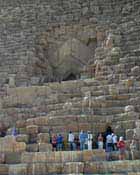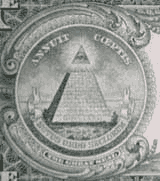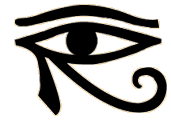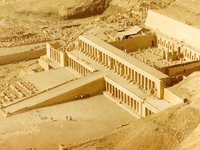EgyptEgypt is the oldest tourist destination on earth. Ancient Greeks and Romans started the trend, coming to goggle at the cyclopean scale of the Pyramids and the Colossi of Thebes. At the onset of colonial times, Napoleon and the British in turn looted Egypt's treasures to fill their national museums, sparking off a trickle of Grand Tourists that, by the 1860s, had grown into a flood of travellers, packaged for their Nile cruises and Egyptological lectures by the enterprising Thomas Cook.

Today, the attractions of the country are

little different. The focus of most visits remains the great monuments of the Nile Valley, combined with a few days spent exploring the souks, mosques and madrassas of Islamic Cairo. However, possibilities for Egyptian travel also encompass snorkelling and diving along the Red Sea coasts, remote oases and camel trips into the mountains of Sinai, or visits to the Coptic monasteries of the Eastern Desert.
The land itself is a freak of nature, whose lifeblood is the River Nile. From the Sudanese border to the shores of the Mediterranean, the Nile Valley and its Delta are flanked by arid wastes, the latter as empty as the former are teeming with people. This stark duality between fertility and desolation is fundamental to Egypt's character and has shaped its development since prehistoric times, imparting continuity to diverse cultures and peoples over five millennia. It is a sense of permanence and timelessness that is buttressed by religion, which pervades every aspect of life. Although the pagan cults of ancient Egypt are as moribund as its legacy of mummies and temples, their ancient fertility rites and processions of boats still hold their place in the celebrations of Islam and Christianity.
The result is a multi-layered culture, which

seems to accord equal respect to ancient and modern. The peasants ( fellaheen) of the Nile and Bedouin tribes of the desert live much as their ancestors did a thousand years ago. Other communities include the Nubians of the far south, and the Coptic Christians, who trace their ancestry back to pharaonic times. What unites them is a love of their homeland, extended family ties, dignity, warmth and hospitality towards strangers. Though most visitors are drawn to Egypt by its monuments, the enduring memory is likely to be of its people and their way of life.
Secret of the Pyramids
The Pyramids of Giza have been the objects of many conspiracies over the years. Many people believe that the Pyramids are a link to an ancient lost civilization, and may still contain evidence to prove it. Many conspiracy theories regarding secret chambers and passageways within the pyramids exist to this day.

These conspiracy theories became even more widespread in 1993, when Dr. Zahi Hawass announced that the Great Pyramid of Khufu was to be closed to the public for a year. The reason given for the closure was to facilitate cleaning, conservation and restoration of the interior chambers in the Great Pyramid.
The pyramids at duskHowever, conspiracy theorists believe that the Egyptian authorities had uncovered evidence of a lost civilization in the Pyramid, and were secretly excavating it to reveal more information.
The entrance into the Great PyramidDuring the conservation process in 1993, robots were used to explore the small ventilation shafts leading from the "King's Chamber" and the lower "Queen's Chamber" in the Great Pyramid. An intriguing discovery was made: partway through the shafts of the "Queen's Chamber" were "doors" with handles.
In order to pr

ove the transparency of their work and debunk any conspiracies, Dr. Zahi Hawass decided to partner with National Geographic to explore beyond the "doors", and provide a live telecast of the exploration to the rest of the world.
After much publicity, the expedition commenced, with footage telecast live around the world. During the last minute of the show, a camera was sent in a hole made in the "door" of the shaft, revealing another "door" behind it. And that was when the show finished. Conspiracy theories started sprouting, asking the following questions: What's behind the 2nd door? Why did the show end so abruptly? What are they hiding from us?
Illuminati Symbols : The Pyramid
In the late 18th century AD, a group of progressive freethinkers founded a secret society in Bavaria (part of modern-day Germany), calling themselves the Perfectibilists. Over the years, the secret society was called many things, one of which was the Order of the Illuminati.
The great seal on the $1 billThe Illuminati, together with their associates the Freemasons, have long supported science and opposed the restrictive reigns of the Christian Church. As such, they have often been branded as worshippers of the antichrist, and fuel doomsday conspiracies.
How they relate to Egypt is via Illuminati symbols. According to the conspiracies out there, the Illuminati still exist today, and subtly make their presence known via these Illuminati symbols, one of which is the Pyramid.
Dan Brown's Angels and DemonsAccording to the conspiracy theories, these Illuminati symbols are everywhere, demonstrating the Illuminati's control over financial, education and political sectors worldwide. The most famous example of this is the Great Seal on the US$1 note.
Recently, aut

hor Dan Brown popularized the Illuminati and the symbolism of the Pyramid in his books Angels and Demons and The Da Vinci Code. In his books, he suggests that throughout the centuries, anti-church organizations have sought to extend their power over the church. They placed many Illuminati symbols throughout the land, including churches. These symbols include the Pyramid and various obelisks.
Adding to the conspiracies involving the Illuminati and the Pyramid, the recent millennial celebrations at Giza drew a lot of heat from conspiracy theorists. They believed that the Illuminati leaders would perform some dark rites within the Great Pyramid and usher in a dark age at the stroke of midnight of 31st Dec 1999. Well, nothing seems to have happened, as far as we know...
Illuminati Symbols : The All-Seeing EyeThe Eye of Horus represents the eye that the falcon-headed god Horus lost while battling the dark god Set. The symbol, composed of an eye with falcon-like facial designs, was used by the ancient Egyptians as a symbol of protection. It was also used as the Egyptians' system of measuring fractions.

The Eye of HorusHowever, just like the Pyramid, the Eye of Horus has become associated with the Illuminati conspiracies. These objects were used as Illuminati symbols because they represented something older and stronger than the church. As one of the Illuminati symbols, the Eye of Horus has evolved into what is known as the All-Seeing Eye.

The All-Seeing Eye is usually depicted as an eye surrounded by the glow of the sun, and sometimes encased in a pyramid. The most famous example is again the Great Seal on the US$1 note.
The All-Seeing Eye is commonly said to be the eye of the Christian God watching over us, but the conspiracies out there suggest that the Eye represents a "Big Brother" organization watching and controlling us.

Examples of the Eye and Pyramid in corporate logosThe All-Seeing Eye is ever present throughout our daily lives. Many corporations sport the Eye (and sometimes the Pyramid) in their logos. The conspiracy theories assert that the Illuminati are in control of these organizations, and are constantly influencing us via business, television or the internet.
The next time you see any of these Illuminati symbols, it could very well mean that the Illuminati is trying to influence you. "Big Brother" is watching...
Ancient Egyptian MythsThe ancient Egyptian civilization has survived for thousands of years. It has gone through many Dynasties and absorbed many other cultures into its empire.
The story of Thoth, god of wisdomAs such, many of the ancient Egyptian myths have multiple versions, evolving from generation to generation.

Sometimes, the same Egyptian myths can be based on different locations, and sometimes even feature different heroes!
For example, the story of the Creation is arguably the most varied of the ancient Egyptian myths. Different versions, originating from different locations and time periods, feature different gods. However, as with all myths, it is the essence and meaning of the story which is important.
















